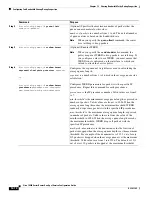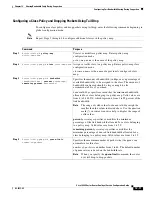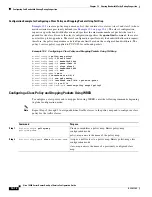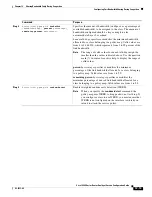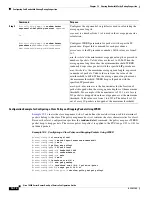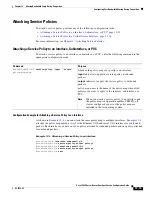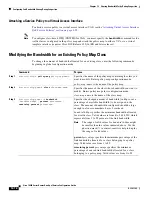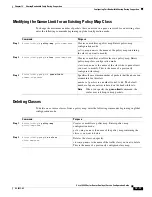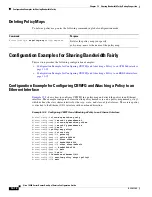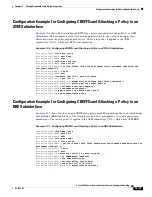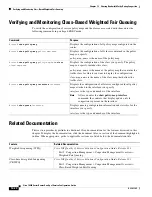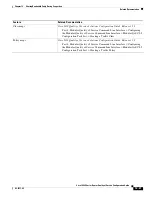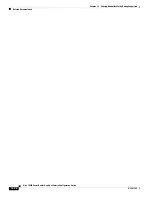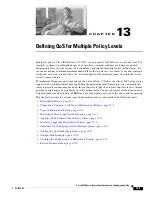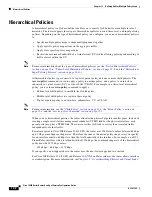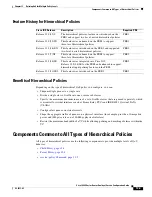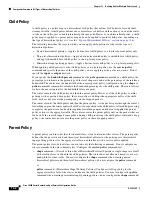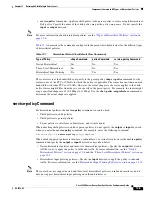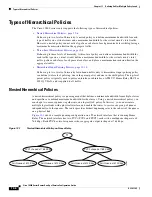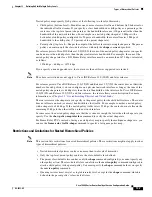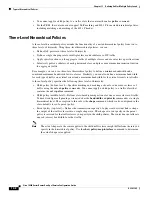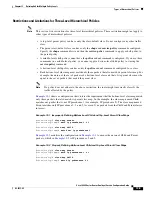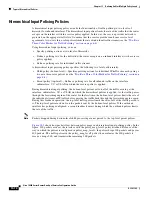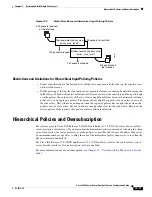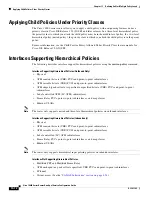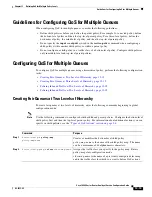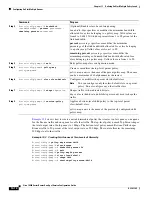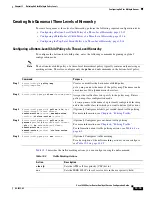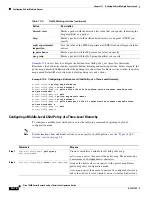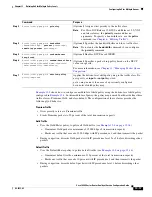
13-2
Cisco 10000 Series Router Quality of Service Configuration Guide
OL-7433-09
Chapter 13 Defining QoS for Multiple Policy Levels
Hierarchical Policies
Hierarchical Policies
A hierarchical policy is a QoS model that enables you to specify QoS behavior at multiple levels of
hierarchy. The router supports three types of hierarchical policies: nested, three-level, and input policing
policies. Depending on the type of hierarchical policy you configure, you can use hierarchical policies
to:
•
Specify multiple policy maps to shape multiple queues together
•
Apply specific policy map actions on the aggregate traffic
•
Apply class-specific policy map actions
•
Restrict the maximum bandwidth of a virtual circuit (VC) while allowing policing and marking of
traffic classes within the VC
Note
For more information about the types of hierarchical policies, see the
“Nested Hierarchical Policies”
section on page 13-6
,
“Three-Level Hierarchical Policies” section on page 13-8
, and the
“Hierarchical
Input Policing Policies” section on page 13-10
).
All hierarchical policy types consist of a top-level parent policy and one or more child policies. The
service-policy
command is used to apply a policy to another policy, and a policy to an interface,
subinterface, virtual circuit (VC), or virtual LAN (VLAN). For example, in a three-level hierarchical
policy, you use the
service-policy
command to apply a:
•
Bottom-level child policy to a middle-level child policy
•
Middle-level child policy to a top-level parent policy
•
Top-level parent policy to an interface, subinterface, VC, or VLAN
Note
For more information, see the
“Child Policy” section on page 13-4
, the
“Parent Policy” section on
page 13-4
, and the
“service-policy Command” section on page 13-5
.
When you use hierarchical policies, the router allocates the physical pipe into smaller pipes. Instead of
creating a single versatile time management scheduler (VTMS) link for the physical interface, each
parent policy map has a VTMS link. The router uses this QoS link to service the associated traffic
independently of other traffic.
For releases prior to Cisco IOS Release 12.0(25)SX, the router uses 128 discrete values between 64 kbps
and 1 Gbps as multiqueue shape rates. Therefore, the sum of the nested policy shape rates you specify
for an interface must be 64 kbps less than the total bandwidth of the interface. For example, on a DS1
Frame Relay interface with a total bandwidth of 1536 kbps, the combined shape rate of the hierarchical
policy must be 1472 kbps or less:
1536 kbps – 64 kbps = 1472 kbps
If you specify a non-supported rate, the router uses the next lower supported rate instead.
For Cisco IOS Release 12.0(25)SX and Release 12.3(7)XI, and later releases, the router allows interface
oversubscription. For more information, see
Chapter 15, “Oversubscribing Physical and Virtual Links.”

